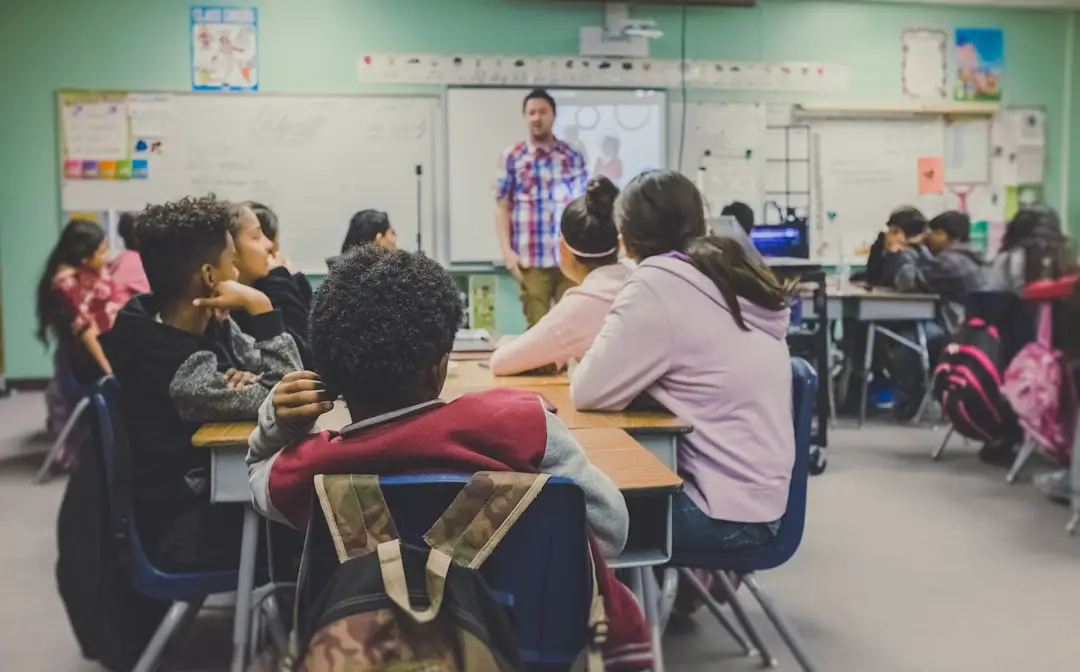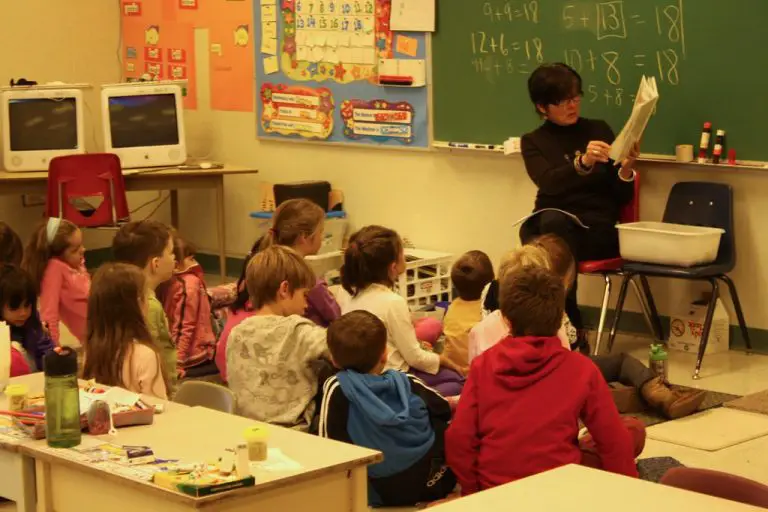Support our educational content for free when you buy through links on our site. Learn more
10 Engaging Examples of Pedagogical Practices for 2025! 🎓
In the ever-evolving world of education, the way we teach can significantly impact student engagement and learning outcomes. Examples of pedagogical practices are not just theoretical concepts; they are practical strategies that educators can implement to foster a more dynamic and inclusive classroom environment. Did you know that research shows students retain up to 75% of what they learn through active participation compared to just 10% through passive listening? This stark difference highlights the importance of innovative teaching methods.
In this article, we’ll explore 10 powerful examples of pedagogical practices that can transform your teaching approach and enhance student learning. Whether you’re a seasoned educator or just starting your teaching journey, these strategies will inspire you to create a more engaging and effective learning experience. Ready to dive in? Let’s get started!
Key Takeaways
- Active Learning: Engaging students through hands-on activities enhances retention.
- Collaborative Learning: Promotes teamwork and communication skills among students.
- Inquiry-Based Learning: Encourages curiosity and critical thinking through exploration.
- Flipped Classroom Model: Maximizes classroom time for interactive learning.
- Differentiated Instruction: Tailors teaching methods to meet diverse student needs.
For more resources to enhance your teaching strategies, check out our recommended educational tools:
- 👉 Shop Classroom Management Tools on Amazon: Classroom Management Tools
- Explore Teaching Strategies Books: Teaching Strategies Books
Table of Contents
- Quick Tips and Facts
- Understanding Pedagogical Practices: A Deep Dive
- The Evolution of Pedagogical Approaches
- Top 10 Examples of Effective Pedagogical Practices
- The Role of Technology in Modern Pedagogy
- Assessing the Effectiveness of Pedagogical Practices
- Challenges in Implementing Innovative Pedagogical Strategies
- Future Trends in Pedagogical Practices
- Conclusion
- Recommended Links
- FAQ
- Reference Links
Quick Tips and Facts
To get started with understanding pedagogical practices, it’s essential to know that pedagogy refers to the theory and practice of teaching, including the methodology and process instructors use to approach teaching and learning. As educators at Teacher Strategies™, we recommend checking out our related article on What are the 5 pedagogy strategies? to dive deeper into the fundamentals. For a comprehensive approach, visit our Instructional Strategies category for more insights.
Key Pedagogical Practices
Some key pedagogical practices include:
- Active Learning: A student-centered approach where students engage in the learning process.
- Authentic Assessment: Measures student learning through real-world tasks or meaningful application of knowledge/skills.
- Collaborative Learning: Students work and learn together in small groups to accomplish shared goals.
Understanding Pedagogical Practices: A Deep Dive
Pedagogical practices are designed with the learner in mind, focusing on how students learn and process information. According to Montclair University’s ITDS, effective pedagogical practices should consider the learner’s perspective, encouraging interaction, engagement, and reflection.
The Role of Technology
Technology plays a significant role in modern pedagogy, offering tools like ChatGPT and artificial intelligence to enhance the learning experience. However, as noted by CloudAssess, it’s crucial for educators to be informed about these tools to address questions, acknowledge benefits and misuses, and leverage instructional design strategies.
The Evolution of Pedagogical Approaches
Over time, pedagogical approaches have evolved to include various methods such as traditional, critical, social, constructivist, and liberationist approaches. Each approach has its unique characteristics, such as focusing on the teacher’s authority, learner autonomy, or the social context of learning. For more on these approaches, visit Learning Journals.
Constructivism
Constructivism is a progressive teaching style where children are active learners, focusing on learning through experiences and reflection. This approach is child-centered and includes elements like project work, play, exploration, and inquiry-based learning. The Montessori method is an example of constructivist teaching.
Top 10 Examples of Effective Pedagogical Practices
Here are ten examples of effective pedagogical practices:
- Collaborative Learning: Students work together in groups to accomplish shared goals.
- Inquiry-Based Learning: Students learn by asking questions and conducting investigations.
- Flipped Classroom Model: Instructional strategy leveraging a blended learning model where students gain first exposure to coursework outside the classroom.
- Project-Based Learning: Students work on real-world projects to enhance problem-solving, critical thinking, and teamwork skills.
- Differentiated Instruction: Teaching approach that considers the diverse needs and abilities of students.
- Experiential Learning: Uses real-life examples to offer a shared learning experience, allowing students to solve problems and think critically.
- Socratic Method: Encourages critical thinking and dialogue through questioning.
- Game-Based Learning: Uses games to teach skills and subjects in an engaging manner.
- Culturally Responsive Teaching: Values diverse cultural backgrounds, integrating experiences into learning to promote equity and respect.
- Blended Learning: Combines face-to-face instruction with digital learning platforms.
The Role of Technology in Modern Pedagogy
Technology has revolutionized the way we teach and learn, offering a wide range of tools and resources to enhance the educational experience. From learning management systems to educational apps, technology provides opportunities for personalized learning, real-time feedback, and collaborative learning.
Online Resources
For more information on pedagogical practices and technology integration, visit:
- Khan Academy for online courses and resources.
- Coursera for massive open online courses.
- Edmodo for a learning management system.
Assessing the Effectiveness of Pedagogical Practices
Assessing the effectiveness of pedagogical practices is crucial to ensure that students are learning and achieving their full potential. This involves using various assessment methods, such as formative, summative, and authentic assessments, to measure student learning and understanding.
Feedback and Reflection
Feedback and reflection are essential components of effective pedagogical practices. According to Bloom’s Taxonomy, feedback should be specific, timely, and focused on the task, not the person.
Challenges in Implementing Innovative Pedagogical Strategies
Implementing innovative pedagogical strategies can be challenging, especially when faced with resource constraints, resistance to change, and limited adaptation to adult learners. However, by prioritizing essential content, using eLearning software, and conducting phased learning sessions, educators can overcome these challenges and create engaging and effective learning experiences.
Overcoming Barriers
To overcome barriers to innovation, educators can:
- Gradually integrate new technologies and tools into their teaching practices.
- Offer training and support for teachers and students.
- Encourage feedback and reflection to improve the learning experience.
Future Trends in Pedagogical Practices
The future of pedagogical practices is exciting and rapidly evolving, with trends such as personalized learning, artificial intelligence, and virtual reality set to transform the way we teach and learn. By staying up-to-date with the latest research and technologies, educators can create innovative and effective learning experiences that prepare students for success in the 21st century.
Staying Current
To stay current with the latest trends and research in pedagogical practices, visit:
- Teacher Strategies for articles and resources on instructional strategies and lesson planning.
- Education Week for news and analysis on education policy and practice.
- The Journal of Educational Psychology for research on educational psychology and pedagogy.
Conclusion

In summary, understanding and implementing effective pedagogical practices is essential for fostering an engaging and productive learning environment. From collaborative learning to inquiry-based approaches, the strategies discussed in this article highlight the importance of adapting teaching methods to meet the diverse needs of students. While there are challenges in integrating these practices, the benefits far outweigh the drawbacks.
Positives of effective pedagogical practices include:
- Enhanced student engagement and motivation.
- Improved critical thinking and problem-solving skills.
- Greater inclusivity and support for diverse learners.
Negatives may involve:
- Resistance to change from both educators and students.
- Resource constraints that can limit the implementation of innovative strategies.
We confidently recommend that educators embrace these practices, as they are vital for preparing students for success in an ever-evolving world. By staying informed and adaptable, teachers can create meaningful learning experiences that resonate with their students.
Recommended Links
- 👉 Shop Educational Resources on Amazon:
FAQ

What are some effective pedagogical practices for teaching diverse learners in an inclusive classroom setting?
Understanding Diversity in Learning
Effective pedagogical practices for diverse learners include differentiated instruction, where teachers tailor lessons to meet the varied needs of students. This can involve using multiple teaching methods, such as visual aids, hands-on activities, and collaborative projects. Culturally responsive teaching is also crucial, as it acknowledges and incorporates students’ cultural backgrounds into the curriculum, fostering a sense of belonging and engagement.
How can teachers incorporate technology into their pedagogical practices to enhance student engagement and learning outcomes?
Leveraging Technology for Engagement
Teachers can use technology to create interactive and engaging learning experiences. Tools like Google Classroom for assignments, Kahoot! for quizzes, and Padlet for collaborative brainstorming can enhance participation. Additionally, incorporating educational apps and online resources allows for personalized learning paths, catering to individual student needs and interests.
What are some examples of pedagogical practices that promote critical thinking and problem-solving skills in students?
Fostering Critical Thinking
Examples include project-based learning, where students tackle real-world problems, and Socratic questioning, which encourages deep thinking through dialogue. Inquiry-based learning also promotes critical thinking by allowing students to explore questions and conduct investigations, leading to a deeper understanding of the subject matter.
What role do formative assessments play in informing pedagogical practices and driving student success in the classroom?
The Importance of Formative Assessments
Formative assessments provide ongoing feedback to both teachers and students, helping to identify areas of strength and areas needing improvement. By using tools such as quizzes, peer reviews, and reflective journals, educators can adjust their teaching strategies to better meet student needs, ultimately driving success.
How can teachers use data and feedback to refine their pedagogical practices and improve student achievement over time?
Data-Driven Decision Making
Teachers can collect and analyze data from assessments and student feedback to identify trends and areas for improvement. This data can inform instructional decisions, allowing educators to tailor their approaches and interventions to enhance student learning outcomes.
What are some pedagogical practices that support the development of social-emotional learning skills, such as self-awareness and self-regulation, in students?
Integrating Social-Emotional Learning
Practices such as mindfulness activities, collaborative group work, and reflection exercises can help students develop self-awareness and self-regulation. Creating a safe and supportive classroom environment encourages students to express their emotions and learn to manage them effectively.
How can teachers balance the need for standardized curriculum with the need for personalized pedagogical practices that meet the unique needs of each student?
Finding the Right Balance
Teachers can align standardized curriculum goals with personalized learning by incorporating flexible teaching methods. This might include offering choices in assignments, using varied instructional strategies, and providing opportunities for students to pursue their interests within the curriculum framework.
What are some strategies for teachers to reflect on and evaluate the effectiveness of their pedagogical practices, and make adjustments as needed to drive continuous improvement?
Reflective Practice for Continuous Improvement
Teachers can engage in reflective practice by maintaining a teaching journal, participating in peer observations, and seeking feedback from students. Regularly evaluating lesson outcomes and student engagement can help educators identify successful strategies and areas for growth, fostering a culture of continuous improvement.

